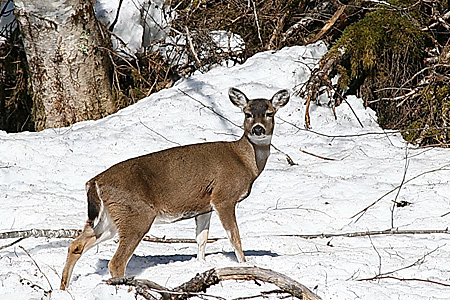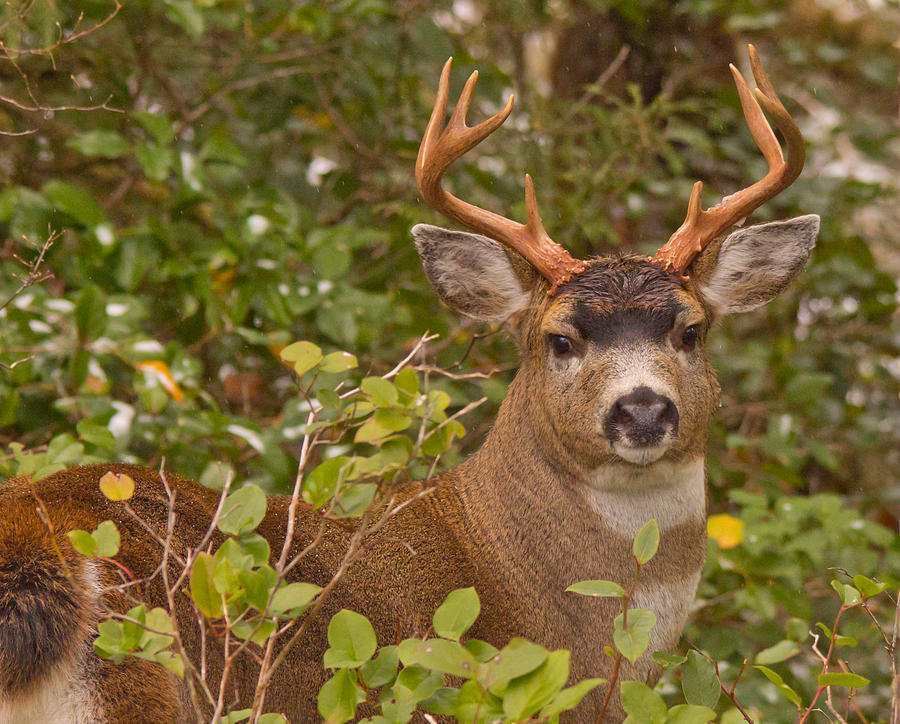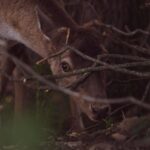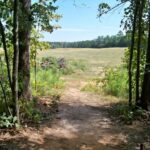Prepare to be captivated by the enigmatic Blacktail Sitka deer, an Alaskan icon that gracefully roams the lush rainforests of the Pacific Northwest. With their sleek coats and distinctive antlers, these creatures embody the wild spirit of the Alaskan wilderness, inviting us to unravel their secrets and appreciate their ecological significance.
From their habitat preferences to their intriguing social dynamics, this comprehensive guide will immerse you in the world of Blacktail Sitka deer, revealing their fascinating adaptations, conservation challenges, and cultural importance. So, let’s embark on an adventure into the heart of Alaska’s forests and discover the enchanting Blacktail Sitka deer.
Blacktail Sitka Deer Description

The Blacktail Sitka deer (Odocoileus hemionus sitkensis) is a subspecies of the mule deer native to the temperate rainforests of the Pacific Northwest. It is a medium-sized deer, with males weighing between 150-250 pounds and standing up to 3 feet tall at the shoulder.
Females are slightly smaller, weighing between 100-150 pounds and standing about 2.5 feet tall.
Blacktail Sitka deer have a distinctive black tail, which they raise when alarmed. Their coats are a reddish-brown color in the summer and a dark brown in the winter. They have large ears and a white patch around their eyes.
Habitat Preferences
Blacktail Sitka deer are found in the temperate rainforests of the Pacific Northwest, from southern Alaska to northern California. They prefer areas with dense vegetation, such as forests, thickets, and swamps. They also need access to water, such as rivers, streams, or lakes.
Diet and Feeding Habits
Blacktail Sitka deer are herbivores, and their diet consists mainly of plants. They eat a variety of plants, including leaves, twigs, buds, fruits, and grasses. They also eat mushrooms and lichens.
Blacktail Sitka deer are browsers, which means they prefer to eat plants that are high in nutrients and low in fiber. They often feed in the early morning and late evening, and they spend the rest of the day resting or hiding from predators.
Blacktail Sitka Deer Behavior

Blacktail Sitka deer are fascinating creatures with complex social and behavioral patterns. Understanding their group dynamics, reproductive behavior, and communication methods provides valuable insights into their natural history.
Social Structure and Group Dynamics
Blacktail Sitka deer are primarily solitary animals, except during the breeding season. During the summer months, they form loose aggregations of up to 10 individuals, primarily consisting of females and their young. Males are typically solitary, joining the group only during the rut.
Reproductive Behavior
The breeding season for Blacktail Sitka deer typically occurs from October to December. During this time, males become highly aggressive and engage in ritualized fights to establish dominance. Dominant males mate with multiple females, forming temporary bonds that last for several weeks.
Females typically give birth to a single fawn in the spring, after a gestation period of approximately 200 days. Fawns are precocial, meaning they are able to walk and follow their mothers shortly after birth. They remain with their mothers for up to a year, learning essential survival skills.
Communication Methods
Blacktail Sitka deer use a variety of vocalizations and body language to communicate with each other. Their vocalizations include a distinctive “whistle” used for alarm, a “gruff” sound used during courtship, and a “bleat” used by fawns to signal distress.
Blacktail Sitka deer are a subspecies of the black-tailed deer, known for their dark brown or black coat and white tail. While primarily found in the Pacific Northwest, they have also been introduced to other areas, including Texas. If you’re an avid deer hunter, you may be familiar with cactus jack deer hunting , a popular hunting method in the Lone Star State.
Despite the name, cactus jack deer hunting doesn’t involve hunting cacti, but rather targets the blacktail Sitka deer that have adapted to the arid environment of Texas.
Body language is also an important form of communication for Blacktail Sitka deer. They use ear positions, tail flicks, and body postures to convey various messages, such as aggression, submission, or alertness.
Blacktail Sitka Deer Conservation

The Blacktail Sitka deer is a subspecies of the Black-tailed deer found in the coastal regions of southeastern Alaska and British Columbia. It is a medium-sized deer with a distinctive black tail and a dark brown coat. The Blacktail Sitka deer is an important part of the ecosystem, providing food for predators and helping to disperse seeds.
However, the Blacktail Sitka deer is facing a number of threats, including habitat loss, hunting, and climate change.
Habitat Loss
The Blacktail Sitka deer’s habitat is being threatened by logging, development, and other human activities. Logging can remove important cover and food sources for the deer, while development can fragment their habitat and make it more difficult for them to move around.
Blacktail sitka deer are known for their impressive antlers, which can grow up to 30 inches long. These antlers are made of bone and are covered in a layer of velvet during the summer months. In the fall, the velvet is shed and the antlers harden.
If you’re looking for a way to preserve your deer antlers, you can try using borax deer antlers . This method involves soaking the antlers in a solution of borax and water. The borax will help to preserve the antlers and prevent them from decaying.
Once the antlers are dry, you can display them in your home or office.
Hunting
The Blacktail Sitka deer is a popular game animal, and hunting is one of the biggest threats to the subspecies. Hunting can reduce the number of deer in an area, and it can also disrupt their social structure and behavior.
Climate Change
Climate change is also a threat to the Blacktail Sitka deer. Climate change is causing the average temperature in the deer’s habitat to increase, and this is leading to changes in the vegetation. These changes can make it more difficult for the deer to find food and shelter.
Conservation Efforts
There are a number of conservation efforts underway to help the Blacktail Sitka deer. These efforts include:
- Protecting and restoring the deer’s habitat
- Regulating hunting
- Educating the public about the importance of the Blacktail Sitka deer
- Conducting research to learn more about the deer and its needs
These efforts are helping to protect the Blacktail Sitka deer and ensure its survival for future generations.
Blacktail Sitka Deer Hunting
Hunting Blacktail Sitka deer is a popular activity in the Pacific Northwest, and it’s important to understand the regulations and ethical considerations before you head out into the field.
Hunting seasons for Blacktail Sitka deer vary depending on the location, so it’s important to check with your local wildlife agency for specific dates. In general, hunting is allowed during the fall and winter months when the deer are at their prime.
Hunting Regulations
There are a number of hunting regulations that you need to be aware of before you go hunting for Blacktail Sitka deer. These regulations include:
- The number of deer you can harvest per day
- The type of weapon you can use
- The areas where you can hunt
- The time of day you can hunt
Ethical Considerations
In addition to the hunting regulations, there are also a number of ethical considerations that you should keep in mind when hunting Blacktail Sitka deer. These considerations include:
- Respecting the animal
- Hunting only what you need
- Following the principles of fair chase
Cultural Significance
For indigenous communities in the Pacific Northwest, hunting Blacktail Sitka deer has a deep cultural significance. Deer meat is an important source of food, and the hunt is often seen as a way to connect with the land and the animals that live there.
Blacktail Sitka Deer Research
Ongoing research initiatives are crucial for enhancing our understanding of Blacktail Sitka deer and their conservation needs. Scientists are actively engaged in various studies to explore different aspects of this species, including their population dynamics, habitat use, and genetic diversity.
Population Monitoring, Blacktail sitka deer
Regular monitoring of Blacktail Sitka deer populations is essential for assessing their status and identifying trends. Researchers conduct surveys to estimate population size, density, and age structure. This information helps managers make informed decisions regarding harvest quotas and habitat management strategies.
Habitat Use and Selection
Understanding how Blacktail Sitka deer utilize their habitat is vital for conservation. Researchers investigate factors such as vegetation composition, topography, and human disturbance that influence deer distribution and movement patterns. This knowledge aids in identifying critical habitats and developing appropriate management plans.
Genetic Diversity and Connectivity
Genetic studies are conducted to assess the genetic diversity and connectivity of Blacktail Sitka deer populations. This information helps identify genetically distinct populations and potential threats to genetic integrity. Maintaining genetic diversity is crucial for the long-term survival and adaptability of the species.
Areas for Further Research
Despite ongoing research efforts, there are still areas where further investigation is needed to enhance our understanding of Blacktail Sitka deer. These include:
- Long-term population trends and the impact of climate change
- Habitat carrying capacity and the effects of human development
- Disease dynamics and their impact on deer populations
Importance of Ongoing Monitoring and Data Collection
Continuous monitoring and data collection are vital for the effective conservation of Blacktail Sitka deer. This information provides a baseline for evaluating population trends, habitat changes, and the effectiveness of management strategies. By integrating research findings into conservation plans, we can ensure the long-term survival and well-being of this iconic species.
Final Summary

As we conclude our exploration of Blacktail Sitka deer, it’s evident that these animals are not merely creatures of the forest but symbols of Alaska’s pristine wilderness. Their resilience, adaptability, and cultural significance remind us of the delicate balance between nature and human activities.
By understanding and protecting these magnificent deer, we not only safeguard their future but also preserve a vital part of Alaska’s ecological and cultural heritage.
FAQ Corner
What is the average lifespan of a Blacktail Sitka deer?
Blacktail Sitka deer typically live for 8-12 years in the wild.
Are Blacktail Sitka deer endangered?
No, Blacktail Sitka deer are not considered endangered, but their populations are monitored due to habitat loss and hunting.
What is the significance of Blacktail Sitka deer to indigenous communities?
Blacktail Sitka deer hold cultural and spiritual importance for indigenous communities in Alaska, providing sustenance, materials for clothing and tools, and a connection to the land.



